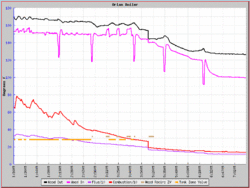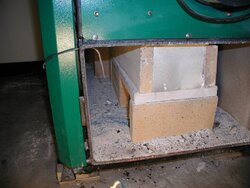Hello all--
On my Econoburn 150, once it is turned on, the blower will continue to run until it is manually shut off. Similarly, at the end of a burn, while the "main" circulator from the boiler to the load will shut off when the boiler drops below about 150, the "near" circulator will come back on below 150, and remain running until the boiler is shut off.
I'd originally thought of using a temperature switch, placed in the flue, as I mention in this prior thread-
https://www.hearth.com/econtent/index.php/forums/viewthread/20728/
with a temporary bypass timer to actuate at the beginning of the burn to allow the boiler to get going
but I'm interested in other ideas, or suggestions on pros and cons of the temp-switch approach
What do other boiler makes, or other folks' installations use to accomplish this function? I've heard mention of timers, but I don't yet have a good sense of the estimated times, which seem to vary a lot based on wood type and size, heat demand, and weather. And I am concerned about the effect on the boiler if the timer times out too early with a bed of coals in the firebox.
Some have mentioned O2 sensors, but I am assuming that those would be expensive and fiddly. I am looking for reliable and simple.
Looking forward to input from the collective Boiler Room brain...
Thanks!
On my Econoburn 150, once it is turned on, the blower will continue to run until it is manually shut off. Similarly, at the end of a burn, while the "main" circulator from the boiler to the load will shut off when the boiler drops below about 150, the "near" circulator will come back on below 150, and remain running until the boiler is shut off.
I'd originally thought of using a temperature switch, placed in the flue, as I mention in this prior thread-
https://www.hearth.com/econtent/index.php/forums/viewthread/20728/
with a temporary bypass timer to actuate at the beginning of the burn to allow the boiler to get going
but I'm interested in other ideas, or suggestions on pros and cons of the temp-switch approach
What do other boiler makes, or other folks' installations use to accomplish this function? I've heard mention of timers, but I don't yet have a good sense of the estimated times, which seem to vary a lot based on wood type and size, heat demand, and weather. And I am concerned about the effect on the boiler if the timer times out too early with a bed of coals in the firebox.
Some have mentioned O2 sensors, but I am assuming that those would be expensive and fiddly. I am looking for reliable and simple.
Looking forward to input from the collective Boiler Room brain...
Thanks!



